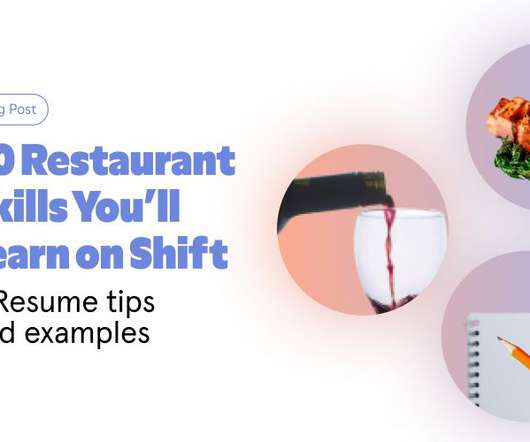Restaurant Recruiting During and After COVID-19
7 Shifts
JULY 29, 2020
Restaurant recruiting during the COVID-19 pandemic can be advantageous for restaurants because so much restaurant talent is looking for work. It’s important for restaurant hiring and training processes to reflect new COVID-19 safety measures. Will any of the hiring or training be conducted remotely? What PPE will you provide?















Let's personalize your content